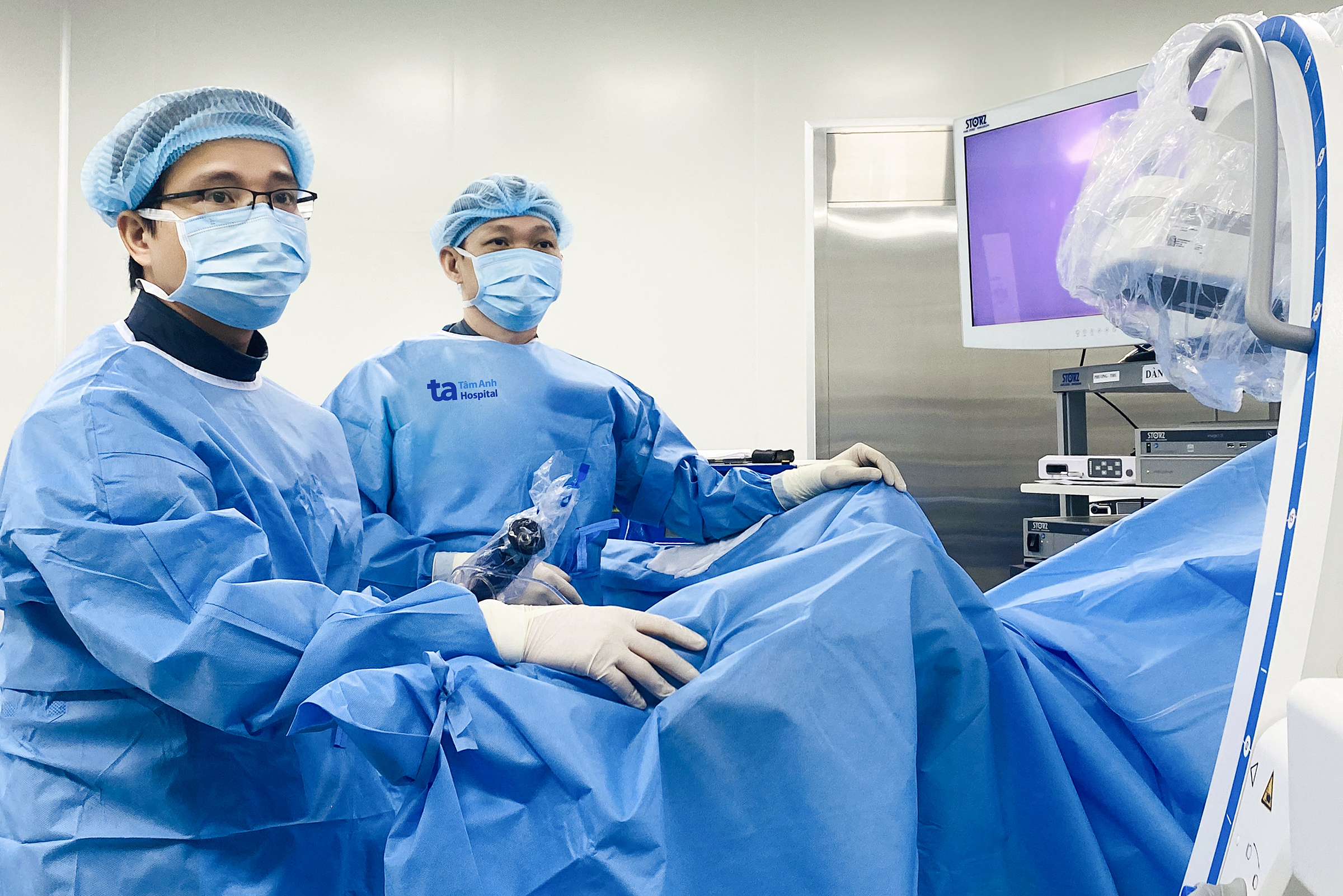Nguyen Tan Cuong, MD, PhD, deputy head of the Urology Department at Tam Anh General Hospital in Ho Chi Minh City, reported that 58-year-old Kien presented with multiple kidney and ureteral stones. A 6 mm stone in the ureter was causing hydronephrosis (water retention in the kidney), and several 6-8 mm stones were located within the renal calyces (part of the kidney).
Kien also had two areas of ureteral stricture (narrowing), one near the bladder and the other near the kidney. Due to the risk of further ureteral damage, doctors decided against a combined procedure to address both the stricture and the stones. Instead, a JJ stent was inserted to relieve the blockage, followed later by an endoscopic stone removal procedure.
Over a month later, Kien's ureter had dilated sufficiently to allow for flexible ureteroscopy. A thin, flexible ureteroscope (2-3 mm) was inserted through the urethra, into the bladder, and then up the ureter to the kidney. The scope, equipped with a camera, allowed the doctors to visualize the kidney's structure and the stones within the renal calyces. High-intensity laser energy was used to break the stones into tiny fragments, which were then passed naturally.
Kien recovered quickly, his hydronephrosis subsided, and he was discharged the following day.
 |
Dr. Cuong (right) and Dr. Phan Truong Nam perform flexible ureteroscopy on Kien. Photo: Tam Anh General Hospital |
Dr. Cuong (right) and Dr. Phan Truong Nam perform flexible ureteroscopy on Kien. Photo: Tam Anh General Hospital
Ureteral strictures can trap stones, obstructing urine flow. If left untreated, the resulting hydronephrosis can lead to serious complications, including impaired kidney function and eventually kidney failure or infection.
Several treatment options exist for kidney stones, including extracorporeal shock wave lithotripsy, ureteroscopy, percutaneous nephrolithotomy, and endoscopic stone removal surgery. The most appropriate method is determined by the location, size, and composition of the stones, as well as the patient's overall health.
To prevent kidney stones, individuals should drink plenty of fluids, limit salt intake, and reduce consumption of oxalate-rich foods, red meat, seafood, and organ meats. Increasing the intake of fruits and vegetables provides essential vitamins and minerals. Maintaining a healthy weight and exercising regularly can also reduce the risk. Regular health check-ups every 6-12 months are recommended for early detection and treatment.
Ha Thanh
*The patient's name has been changed.
| Readers can submit questions about kidney and urological diseases here for doctors to answer. |












